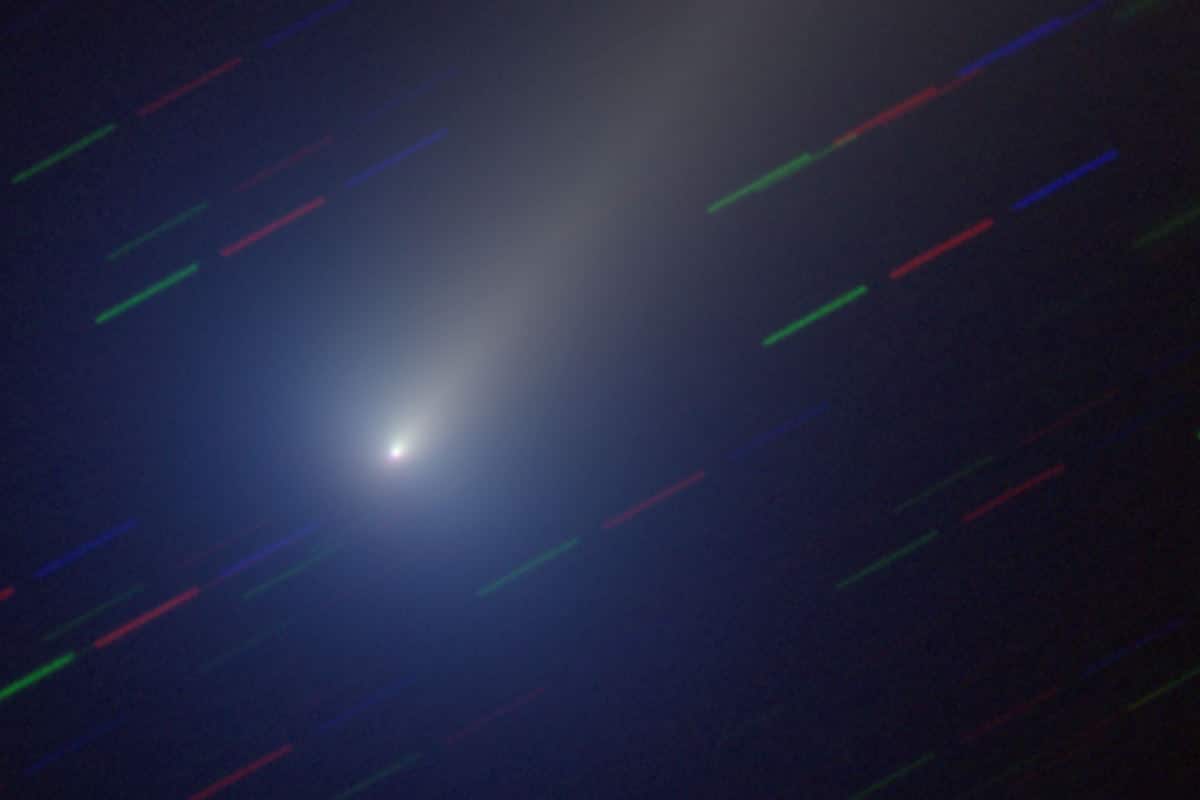Another exciting comet is coming soon. C/2023 A3 orbits the Sun for the first time in 80,000 years, and the good news is that if we’re lucky, we might see it, even if it won’t be until the fall of 2024.
The comet was spotted by NASA’s Project Atlas late last month. This consists of four telescopes in Hawaii, Chile and South Africa that are scanning the skies to warn of asteroids in good time. But NASA was not the first. These are the Chinese, who actually saw the comet in January at the Tsuchinshan Observatory, hence the object’s nickname: Tsuchinshan-ATLAS. Since then, astronomers around the world have reviewed the images and it appears that a telescope in California did indeed spot the comet on December 12 of last year.
high speed
Currently, C/2023 A3 is located between Saturn and Jupiter. But he is in a hurry. At an impressive speed of 290.664 kilometers per hour, he comes this way. The comet is likely to be closest to Earth on October 13, 2024 (mark it on your calendar).
According to astronomers, the comet orbits the sun every 80,660 years. On September 28 next year, the comet will be closest to our star. We call that rock bottom.
a little problem
But it is not yet certain that all this will actually happen. Because like other comets, this one also has the problem that it collapses easily when it gets hot. Clumped together by ice, rock, and dust, comets often break up as they approach the Sun.
But if the comet persists, we can spot it with amateur telescopes as early as June next year. Then it flies between Earth and the sun on its way to perihelion. Those with a clear view of the eastern horizon might get a glimpse of a comet at perihelion, especially if the strange visitor has a long tail. And this is quite possible, because the comet is much closer to the Sun than Venus. In fact, the comet is so close to our star that it caresses the orbit of the planet Mercury.
Brighter than clear
But for most people, it will be pretty much invisible in sunlight. Later, when the comet flies into our solar system, it will be higher in the sky and more visible. So the best chance to see it is October 13th next year.
From Earth, the comet would then be as bright as the brightest star. This makes it easier to see than the previous one, the green comet C/2022 E3, which passed in January. This comet had a brightness of +4.6 and was visible to the naked eye. The new comet has a brightness of 0.7, with a potential peak of -5 as dust and ice amplify and reflect sunlight back toward Earth (the lower the number, the brighter). But that’s all only if the thing manages to stay the same.
Promising, but ambiguous
And that is the question. Much is still unknown about C/2023 A3. We don’t even know the size of the comet. Without more data, astronomers are left to speculate if the comet has any chance of survival. But it looks pretty good, according to researcher Qicheng Zhang from University of Pennsylvania. He writes that the comet is the most promising in years in terms of naked-eye visibility from Earth. At the same time, it softens expectations. “The survival of C/2023 by A23 is not guaranteed at this time,” Zhang said.
So all we can do is wait and hope. But with a bit of luck, the 2023 C/A3 will shine in October next year.







